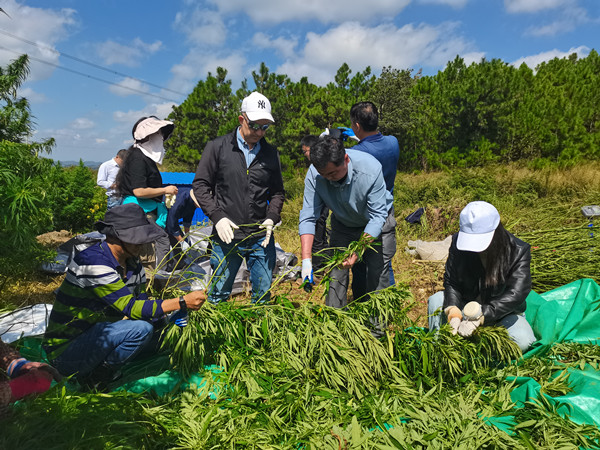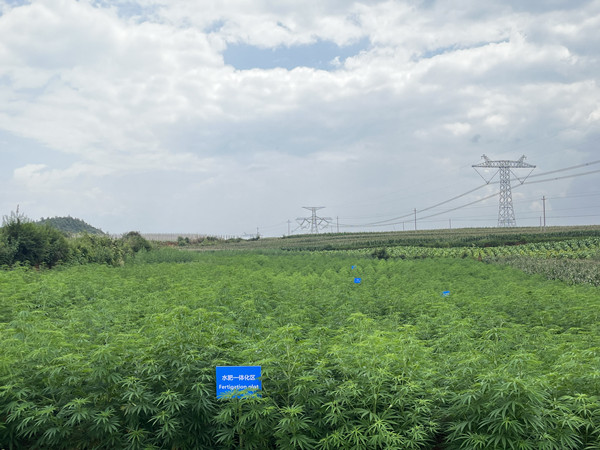New tech boosts industrial hemp planting in Yunnan

An expert team from the Chief Scientist's Office of the National Hemp Industry Technology System reviews the industrial hemp demonstration site in Qujing on Oct 16. [Photo/ynu.edu.cn]

On the path to growth: The industrial hemp demonstration site in Qujing. [Photo/ynu.edu.cn]
The Chief Scientist's Office of the National Hemp Industry Technology System led a team of experts to visit the industrial hemp demonstration site – located in Qujing city in Southwest China's Yunnan province – on Oct 16.
Team members were there to conduct field measurements of the Integrated Water and Fertilizer Cultivation Technology for Industrial Hemp project.
This is a collaborative effort between the industrial hemp physiology and cultivation team at Yunnan University's School of Agriculture and Yuntianhua Chemical Industry Research and Technology Co.
Industrial hemp is mainly used in agricultural cultivation, textiles, clothing, papermaking, munitions, the chemicals industry, new building materials, bioenergy, food health, medicine and feed.
During the on-site field measurements, it was observed that in the area using integrated water and fertilizer cultivation techniques, there were 536 effective hemp plants per acre.
The yield per acre included 844.5 kilograms of fresh stems, 805.1 kg of fresh flowers and leaves, 359.4 kg of dried stems and 270.5 kg of dried flowers and leaves. This resulted in a 14.4 percent increase in yield, compared with conventional water and fertilizer cultivation methods.
The industrial hemp variety chosen for this technology demonstration is the Yunma 8 variety, developed by Yunnan University's School of Agriculture.
The expert team reviewed the relevant data and the integrated water and fertilizer cultivation technology for industrial hemp. It unanimously agreed that the integrated system provided the necessary nutrients and moisture for industrial hemp plants at different growth stages.
The team found that it fully harnesses the growth potential of the plants, achieving high yields and efficiency in the cultivation of industrial hemp for flowers and leaves.
This is expected to serve as a model and technical support for large-scale, high-yield and efficient industrial hemp cultivation – contributing to the continued stable development of the industrial hemp industry.
All rights reserved. Presented by China Daily. 滇ICP备12004993号-2








